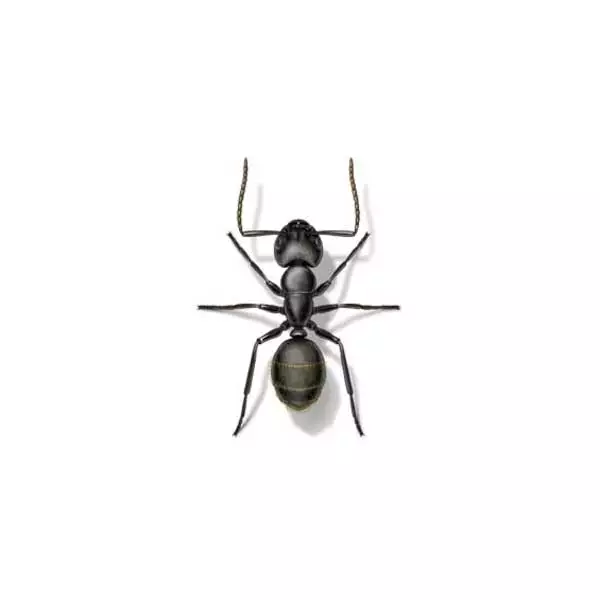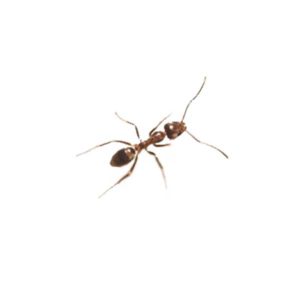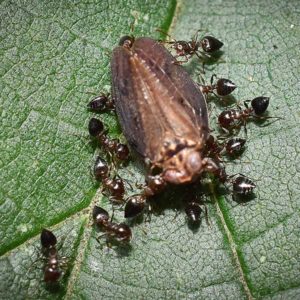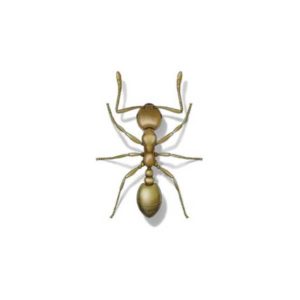Carpenter Ants in Central and Eastern Virginia
Carpenter ants are wood-destroying pests that are often confused with termites. In Virginia, carpenter ants bore into the wood as they construct nests, sometimes causing serious structural damage throughout entire buildings. Unlike termites, carpenter ants do not eat and digest wood. Instead, the ants tunnel and nest through the wood, creating cavities to raise their young. Carpenter ants can seriously damage wood, reducing solid structures to hollow shells. If small sawdust piles are seen at ground level or on window sills in a structure, this may indicate a carpenter ant infestation.
Carpenter Ant Habitat
Carpenter ants prefer to live outdoors in damp, decaying wood. They feed on dead and living insects, nectar, fruit juices, and sugary honeydew excreted by plant-sucking insects, like aphids. Indoors, carpenter ants infest building materials such as wood or foam insulation. In homes, carpenter ants can occupy cavities like those found in hollow doors or window frames. Although they prefer the outdoors, carpenter ants will make their way inside a building through gaps and cracks in foundations. Indoor colonies are always associated with moisture and may occur in hollow doors, window or door frames, or the subfloor of homes.
Carpenter Ant Behaviors, Threats, or Dangers
Carpenter ants rarely bite and are not generally thought of as dangerous. The real threat carpenter ants pose, is their ability to damage and weaken the structural integrity of homes and structures. They will enter buildings in search of nesting sites or moisture and can build nests containing several thousand ants. Carpenter ants swarm in order to mate and establish new colonies. Seeing winged, flying ants in your home is a sign of an infestation. While carpenter ants are not as destructive to your home as termites, they can cause substantial damage. If a carpenter ant infestation is suspected, it is best to contact a professional ant exterminator.
Don’t wait until your home is overrun by carpenter ants. Contact Loyal Termite & Pest Control today!
Need help with Carpenter Ants?
Get started with a FREE quote!





